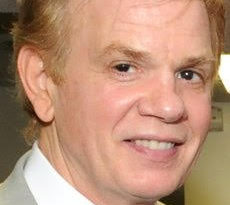Local Accountants Break Down the New Tax Laws
ABOVE: CohnReznick senior managers Richard Persud and Yelena Belaks with partner Joel Boff.
BY BENJAMIN FANG
After all the hoopla about Washington’s attempts to rewrite the tax code, the new law is finally in effect. But what does it mean for local small and mid-sized businesses?
Tim McHale, an accountant and partner at Cerini & Associates, sees tax reform as a mixed bag. Some aspects may hurt small businesses, while others parts may actually help.
On the plus side, large businesses saw a drastic drop in their tax rate from 35 percent to 21 percent. That’s the largest one-time cut in the country’s history for corporations. The corporate alternative minimum tax (AMT) has been repealed.
“That was to bring money and investments back to the U.S.,” McHale said.

Most small businesses are organized as S-corporations, LLCs and sole propiertorships, which means they are subject to tax through the company owner’s individual taxes. McHale said the final tax bill includes a 20 percent deduction for these “pass-through” businesses.
Individual tax rates were lowered, with the highest rate going down from 39.6 percent to 37 percent. The tax brackets also shifted. Individuals making $500,000 or more will now be taxed at the highest percentage.
But it’s not all good news for businesses. McHale said the “major pain” is that deductions on interests have been capped to 30 percent. Previously, that deduction was unlimited. “That’s going to hurt people,” he said.
The other change that may hurt the owners of small businesses is the limit of state and local tax deductions to $10,000. McHale said he sees that alteration as a hit on high-income states like New York, New Jersey and California. Overall, accountants said the new tax plan isn’t as bad as it looks.
“It is mostly taxpayer-friendly for businesses,” said Joel Boff, a partner at CohnReznick. “It’s not necessarily tax simplification. I don’t think anything is simpler in this.”
Yelena Belaks, a senior manager at CohnReznick, said businesses will benefit from an increase to the “bonus depreciation” allowance from 50 percent and 40 percent in 2017 and 2018, respectively, to 100 percent for assets acquired and placed in service after September 27, 2017.
The 100 percent deduction is now allowed for both new and used qualifying property, including office furniture, computers, machinery, equipment and qualified improvements.
“That’s fantastic for businesses,” Boff said. “If you think about the businesses that are in the city, specifically the outer-boroughs, there are a lot of startups. They don’t necessarily have a lot of money to invest in businesses.
“So to the extent they can write everything off in year one, it certainly helps their decision-making process and what they want to invest into their business,” he added.
McHale said the new plan will especially help people making $100,000 or less, such as young people who don’t have high incomes. That’s because of the doubling of the standard deduction, the amount an individual or family can deduct from their income before calculating taxes.
The standard deduction went up to $24,000 for joint filers and $12,000 for individuals.
But it’s still too early to decide what the actual effect of this new tax plan will be because “a lot of things have to play out first,” McHale said, adding there are some areas where clarification is needed.
For example, pass-through businesses will be entitled to take a deduction of 20 percent of their “qualified business income.” However, there are several limitations. One of the limitations for service providers kicks in at $315,000 for married couples filing jointly, and the 20 percent deduction is completely phased out at $415,000.
However, what counts as service businesses? McHale said doctors, lawyers and accountants will all be subject to the limitation. Boff said architects and engineers were carved out from being subject to this limitation, even though they are technically “service providers.”
Earlier this year, Governor Andrew Cuomo floated the idea of a payroll tax to prevent New Yorkers from being burdened with the new tax law.
“It’s shifting the burden to businesses instead of the individual,” McHale said. “I think it’s a starting point of a negotiation.”
But McHale has some questions about that as well. Would that work for LLCs? How about people who are self-employed? He said it may take a few months for everything to settle.
Boff said he has also heard that some states are looking into converting real estate taxes into a charitable contribution, which is tax deductible. He called it a “unique idea,” but isn’t sure it will work.
Since Christmas week, McHale said he’s already fielded a lot of phone calls from clients and other people concerned about the new law. He assured them that the tax returns his company is working on now are under the old tax code.
He also advised everyone to consult tax professionals to answer further questions.
“People have to relax a little and let this play out,” McHale said. “It’s going to be a mess. In some cases, it will be the wild west out there.”
Boff and Belaks have also received a lot of questions from clients. Boff said it has been challenging but fun, and relayed the importance of managing clients’ expectations.
“Some expect a yes or no answer, where there really is no yes or no answer yet because we haven’t received the guidance and we need to work through it,” he said. “There are a lot of calculations to go behind whether you should stay the type of entity you are now or convert.”
Because the laws, regulations and technical corrections have not been written yet, the CohnReznick accountants said they’re trying to figure out the situation now with limited guidance from the government.
“The key takeaway is that individuals and business owners should reach out to their tax advisers,” Belaks said, “and they better have qualified tax advisers to guide them through this.”




